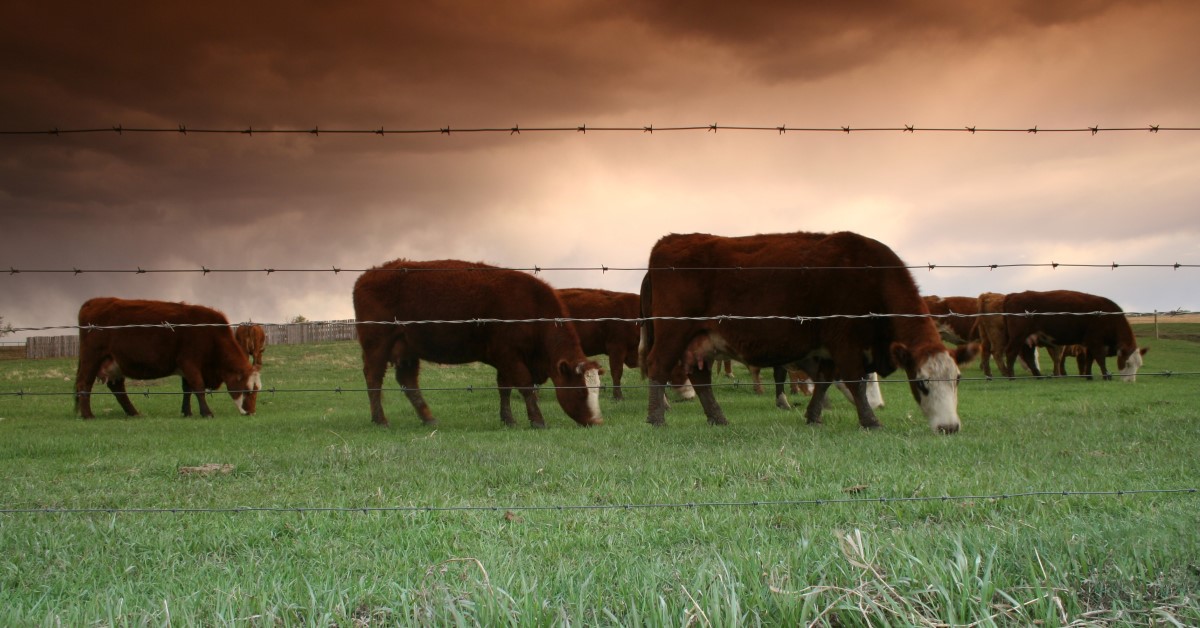
By Tyler Melroe, M.S., Beef Nutritionist, Hubbard Feeds
Managing a herd’s fertility is a continuous process in which one must plan for changing variables, such as weather and lactation. Because we are presently in the fall season, some may think it’s too late to manage body condition score (BCS) in their spring-calving cows. However, as soon as we know they’re bred, it’s time to start managing for future pregnancies. This article is not about why body condition score is important, but about how — and why — we manage it.
Managing maintenance
Whether we are looking to maintain cows or add condition, the first step is understanding what factors influence maintenance requirements. To keep this practical, we will relate these changes to three common feed ingredients (Table 1) and how many pounds of feed a good-milking, 1,300-pound cow would need to consume to maintain a proper BCS.
Table 1. Net energy (Mcal/cwt) values for grass hay, corn grain and corn silage (dry matter basis)
|
|
DM, %a |
NEga |
NEma |
|
Grass hay |
85 |
26 |
58 |
|
Corn grain |
85 |
65 |
98 |
|
Corn silage |
35 |
47 |
75 |
a DM: dry matter; NEg: net energy for gain; NEm: net energy for maintenance
Lactation and pregnancy
The simplest way to reduce a lactating cow’s maintenance requirement is to wean her calf. The first question that should be asked is, “How much feed will be saved by early weaning?” While lactation declines from mid- to late lactation, energy is still required to produce milk. Table 2 describes the additional inputs needed to maintain BCS during late lactation.
Table 2. Additional feedstuffs (pounds, as fed) per cow to maintain BCS, weaning at 148 vs. 240 days*
|
Days since calving |
|||||
|
|
148-168 |
169-189 |
190-210 |
211-240 |
Total |
|
Grass hay |
178 |
141 |
108 |
81 |
508 |
|
Corn grain |
94 |
74 |
57 |
43 |
267 |
|
Corn silage |
300 |
238 |
183 |
137 |
857 |
*Not providing these additional resources would cause a cow starting at BCS 5 to lose about half a condition score during this timeframe.
Weather’s role
Another influencer is the weather. In parts of the country where winter is more pronounced, the changes in daily requirements can be significant. Table 3 describes the additional feed needed for a clean and dry cow on a day that is slightly windy and has a temperature of 10 degrees Fahrenheit.
Table 3. Daily added pounds of feed needed to maintain BCS on a 10oF day with a 10-mph wind
|
|
Pounds, as fed |
|
Grass hay |
10.2 |
|
Corn grain |
5.4 |
|
Corn silage |
17.2 |
Additionally, these effects are cumulative. For example, when feeding corn silage, not only does the cow need an additional 17.2 pounds for managing cold stress, but she will require another estimated 4.5 pounds when prolonging lactation. This equates to an additional 22 pounds of corn silage required daily, simply to maintain condition.
Adding condition
A common situation is trying to put a “little condition” on cattle. Findings by the National Research Council (NRC) in 2000 have provided us with the information necessary to determine the appropriate nutrition required to change condition (Table 4). While each condition score results in roughly the same change in weight for a given cow (80–100 pounds), the composition of gain changes (more fat, less protein). Thus, it takes more energy to achieve each pound of weight gain for a cow with a BCS 5 compared to one with a BCS 3.
Table 4. Energy reserves for cows with different body weight (BW) and BCS (NRC, 2000)
|
Mature BW (pounds) at BCS 5 |
||||
|
BCS |
1,200 |
1,300 |
1,400 |
1,500 |
|
3 |
172 |
186 |
200 |
214 |
|
4 |
196 |
212 |
229 |
245 |
|
5 |
226 |
245 |
264 |
283 |
|
6 |
264 |
286 |
308 |
330 |
|
7 |
311 |
337 |
363 |
389 |
*Mcal NE required or provided to change condition score
So, how is this information practically applied? Cow feeding decisions require the following considerations:
- What change in BCS is desired?
- How many days do we have to make this change?
Referencing the same 1,300-pound cow moving from a BCS 4 to a BCS 5 in 80 days, Table 5 represents the additional pounds of feed needed daily for 80 days to achieve this goal.
Table 5. Additional feed per day for a 1,300-pound cow to move from a BCS 4 to a BCS 5 in 80 days
|
|
Pounds, as fed |
|
Grass hay |
14.4 |
|
Corn grain |
5.5 |
|
Corn silage |
19.0 |
Intake alone is not sufficient to increase BCS score. More energy-dense feedstuffs must be utilized. Adding condition is extremely difficult in early lactation, especially when dealing with cold stress. This emphasizes the need to recognize the opportune times to add body condition and manage feed resources.
It is well established that proper BCS management is critical to a cow’s ability to reproduce. However, what isn’t as intuitive is what needs to be done to make the necessary changes. The information to help you make the appropriate changes is available; if you have a plan and seek products and answers that work, results will follow.
- Log in to post comments
